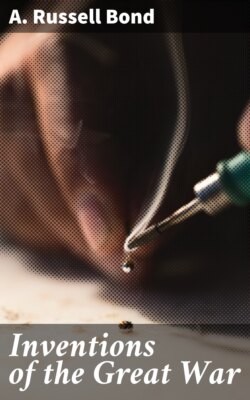Читать книгу Inventions of the Great War - A. Russell Bond - Страница 16
На сайте Литреса книга снята с продажи.
MINIATURE ARTILLERY
ОглавлениеTable of Contents
Hand-artillery was very effective as far as it went, but it had its limitations. Grenades could not be made heavier than two pounds in weight if they were to be thrown by hand; in fact, most of them were much lighter than that. If they were fired from a rifle, the range was increased but the missile could not be made very much heavier. TNT is a very powerful explosive, but there is not room for much of it in a grenade the size of a large lemon. Trench fighting was a duel between forts, and while the hand-artillery provided a means of attacking the defenders of a fort, it made no impression on the walls of the fort. It corresponded to shrapnel fire on a miniature scale, and something corresponding to high-explosive fire on a small scale was necessary if the opposing fortifications were to be destroyed. To meet this problem, men cast their thoughts back to the primitive artillery of the Romans, who used to hurl great rocks at the enemy with catapults. And the trench fighters actually rigged up catapults with which they hurled heavy bombs at the enemy lines. All sorts of ingenious catapults were built, some modeled after the old Roman machines. In some of these stout timbers were used as springs, in others there were powerful coil springs. It was not necessary to cast the bombs far. For distant work the regular artillery could be used. What was needed was a short-distance gun for heavy missiles and that is what the catapult was.
Press Illustrating Service
A 3-inch Stokes mortar and two of its shells
Press Illustrating Service
Dropping a shell into a 6-inch trench mortar
But the work of the catapult was not really satisfactory. The machine was clumsy; it occupied too much space, and it could not be aimed very accurately. It soon gave way to a more modern apparatus, fashioned after the old smooth-bore mortars. This was a miniature mortar, short and wide-mouthed. A rifled barrel was not required, because, since the missile was not to be hurled far, it was not necessary to set it spinning by means of rifling so as to hold it head-on to the wind.
